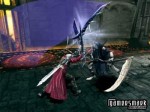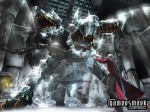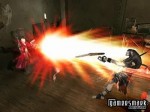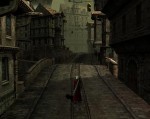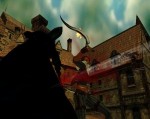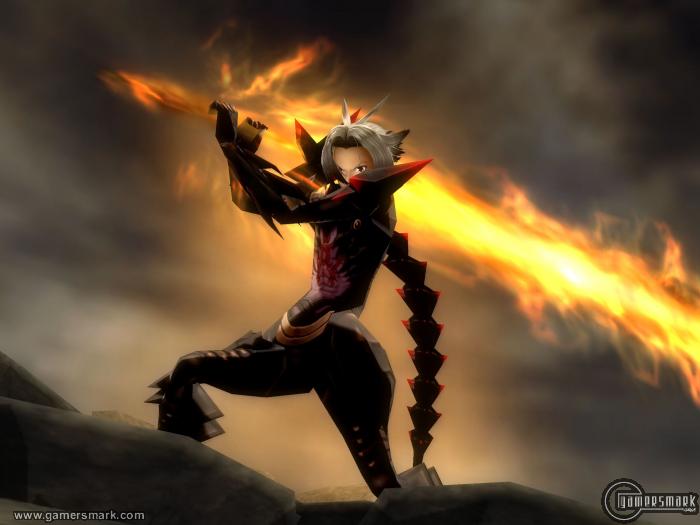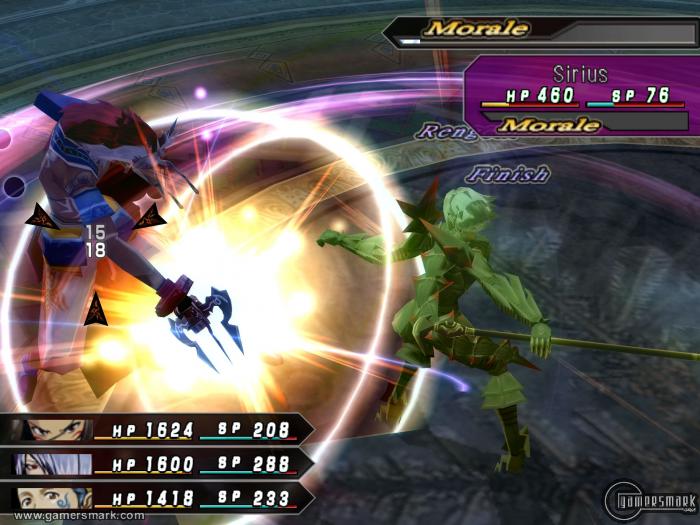Developer: Sting Entertainment | Publisher: Atlus || Overall: 4.0/10
Yggdra Union from Atlus has a seemingly awkward place in the PSP library. It’s practically a straightforward GBA-to-PSP port, so it’s quite obvious that it won’t be visually pleasing. Yggdra Union is essentially the GBA game with some voice-overs and possibly some other improvements that are harder to gauge.
Typically in tactical strategy games there are two teams fighting against each other on more-or-less even ground. One would expect there to be new challenges here and there, just as long as both sides followed the same basic rules of gameplay.
Not in Yggdra Union.
If there ever was a tactical strategy game that made me want to play on the enemy’s side, it’s Yggdra Union. It’s almost amazing to me how two different games are going on at the same time, with the advantage always (and I really mean it) going to the opposition.
Now, there’s lots of needless complication to Yggdra Union. Even after playing over 20 hours, I still have trouble knowing which button does what in the game. In light of the confusion, I’ll spare you a helping and get down to the basics. The basis of combat relies on cards. You get a certain amount of cards, which you use for moving and performing actions during battle. Once you use a card to move, or create a Union (the game’s term for a battle), the card becomes unusable for the rest of the current map you are on. The same does not hold true for your enemy, however. They have one card to use and they keep using it over and over. Okay, I’ll give them that. During battle, however, is where this difference becomes even more of a factor in the gameplay.
When creating a Union, you can enter into a battle with other units as long as they match the certain formation the initiator of the Union has. Why this matters, I’m not sure, but it adds some sort of strategy to the game in the long run. The map itself is also very restrictive as far as positioning units in strategic ways. There are no “extra” pieces of the grid to traverse and flank an enemy, as the current map you are on has a bare minimum of squares required to accomplish whatever the current goal happens to be.
During a battle, there is a gauge at the top of the screen that you can fill up by going Passive or drain by going Aggressive. The higher the bar is filled, the more likely it will be that you will win the battle. Of course, its not assured as other factors are taken into consideration. When you go Aggressive and drain your bar, the likelihood of you winning goes even higher, but only until the bar is drained before going to normal. Going Passive refills it, but your troops are then more susceptible to losing.
Here’s the kicker: Take everything I said in the last paragraph and throw it out. Your opposition doesn’t have to worry about that at all, since they have a “Rage” bar that constantly fills according to the amount of time you spend in battle. Not only that, any amount of Rage that is built up from the first fight in a battle is rolled over to the next fight to benefit the next unit. The gauge you build up does not roll over in the same fashion, as yours is seemingly random considering how well off you are against your enemy.
The only thing that your Passive/Aggressive bar and the Rage bar have in common is that it grants access to a special ability when full. Your opposition can use the card’s special abilities from the get go, while you have to wait until the seventh map of the game (about eight hours in for me) before even finding out why cards are named something. The inability to use special abilities until that point in the game is absurd, especially when the opposition is able to use their card’s special abilities from the beginning of the game.
Particular cards also have Ace Types, which means only a unit that matches the Ace Type can use the card’s special abilities (as long as all other conditions are met). There are three basic weapons – Sword, Spear, and Axe. Sword is better than Axe is better than Spear is better than Sword. Using that formula, you are able to sweep through your enemies, as long as you have the right units attacking against a weapon type that is weaker.
And then, to top it all off, three more types of weaponry are added in halfway through the game. Sword/Spear/Axe are all better than Bows (except when attacking, and you can’t counterattack against a Bow), Rods (better than Sword/Spear/Axe) and something that looks like a Rock that is just tossed in somewhere, which isn’t exactly explained plainly enough for anyone to understand.
Really, Yggdra Union ends up a Chess-style game in which the other guy can take any piece he wants whenever he wants and says “live with it.” There’s something random tossed in each level that completely messes you up without giving you any ability to counteract it. You are constantly put at a disadvantage, seemingly out of spite, with no real rewards for finally succeeding and beating the challenge. Not even the story’s progression rewards you with much of anything interesting or suspenseful.
There are lots of voice-overs, but voicing as a whole is conspicuously thin. The voice actors themselves aren’t bad, which is a boon to the already low production values of the title. Needless to say, the sound effects, graphics, and pretty much everything about the game look like a GBA game, but that’s because it is a GBA game. Watching battles unfold isn’t particularly interesting either, and even though there is a “HIGH” speed option available, its still not fast enough for me.
Yggdra Union will make you hate yourself for playing. It is a fairly unique game, but only in the sense that there are so many weird things about it that make you frustrated. Some friendly user interface additions would go a long way to at least making the game somewhat more pleasant. What it comes down to, however, is that Yggdra Union is a poor strategy game in its very bearings, with very little actual strategy to experience, and more fumbling around with cards and weapon types than necessary instead.

